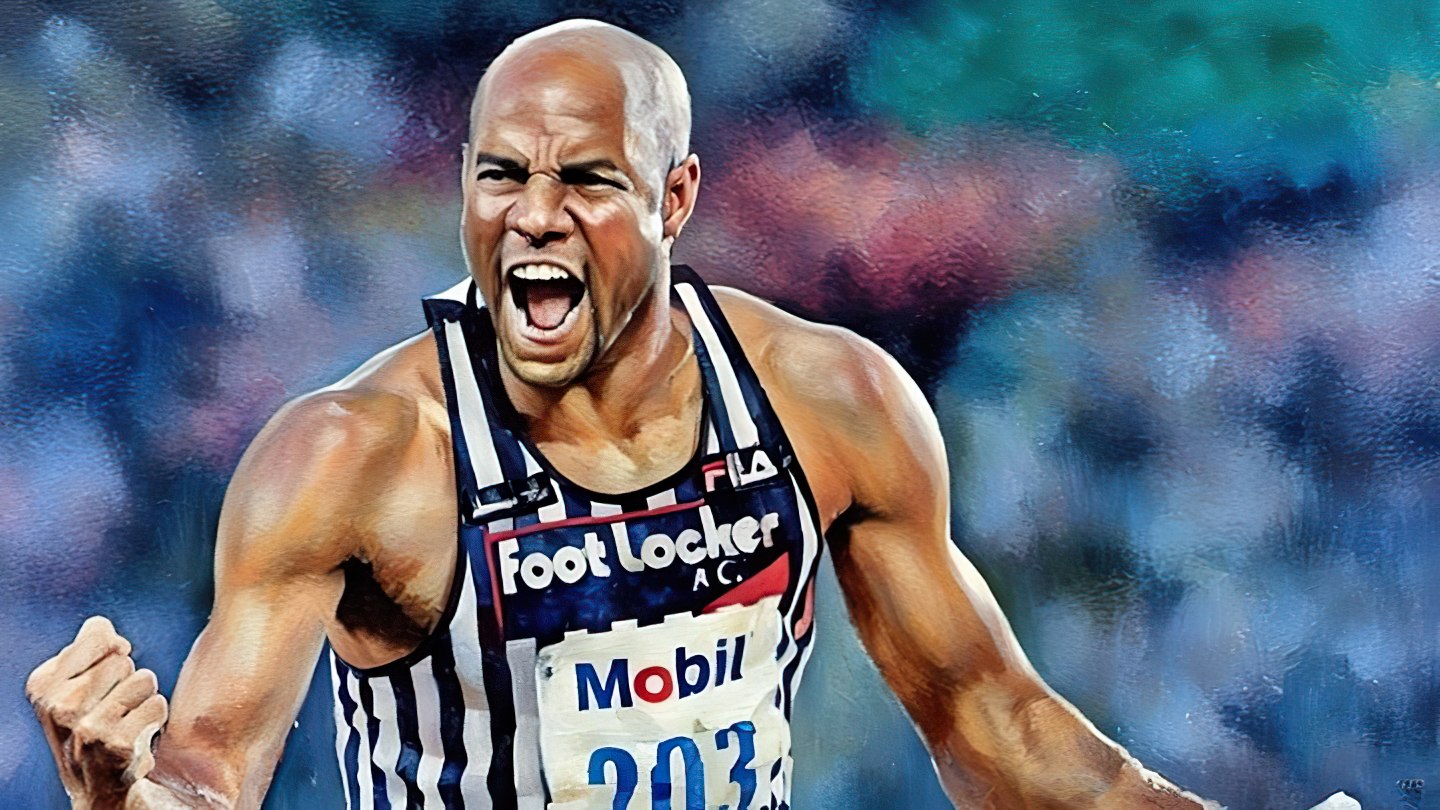Getting Power for the Hammer Throw
The hammer throw is one of the most exhilarating and powerful events in track and field. Unlike other throwing events, it requires an incredible combination of strength, coordination, timing, and explosive power. Athletes throw a heavy ball attached to a long wire, spinning rapidly within a confined circle before releasing it at the perfect angle. To achieve the maximum distance in the hammer throw, explosive power is the key.
Explosive power refers to the ability to generate force quickly, and in the hammer throw, it involves generating maximum speed and power during the rotational spin, then transferring that force smoothly into the release. Building this explosive power doesn’t just happen overnight—it requires a comprehensive training approach that combines strength training, plyometrics, sport-specific exercises, and conditioning. This guide will take you through every step needed to build explosive power for the hammer throw, ensuring you enhance your strength, improve your technique, and increase your throw distance.
Understanding Explosive Power in the Hammer Throw
In the hammer throw, explosive power is paramount. It’s not about raw strength alone but about using your body in the most efficient and coordinated way possible. The goal is to apply as much force as possible in the shortest time, translating that force into a high-speed release of the hammer.
Explosive power in the hammer throw comes primarily from the hips, legs, and core. These muscles work together to initiate and drive the rotational movement of the throw. The shoulders and arms help guide and release the hammer, but the majority of the power comes from the lower body, with the core acting as the bridge to transfer force.
To truly excel in hammer throwing, it is vital to understand the mechanics of explosive power in your body. Building this kind of power will not only help you throw farther but also make your movements more fluid and efficient, reducing the risk of injury and improving overall performance.
The Role of Strength Training in Building Explosive Power
Strength is the foundation upon which explosive power is built. Without a solid strength base, you won’t be able to generate the force needed to power through the rotational movement of the hammer throw. Strength training is essential for developing the muscle groups that contribute to the hammer throw—namely the legs, core, and upper body.
Lower Body Strength: The Powerhouse of Your Throw
The hammer throw is a full-body movement that starts from the ground up. Your legs are the primary source of the initial force, providing the strength and power to propel your body into the spin. Lower body strength is crucial for generating speed and explosiveness, which are essential for achieving maximum distance.
Squats are the cornerstone of lower body strength training. They help strengthen the quadriceps, hamstrings, glutes, and lower back—muscles critical for driving the body upward and pushing the hammer forward during the throw. For the hammer throw, deep squats that improve flexibility and power are the best choice. These should be done with progressive resistance to build strength and explosiveness.
Deadlifts also play a significant role in developing the posterior chain, especially the hamstrings, glutes, and lower back. These muscles are vital for generating force during the spin, as they work in unison with the legs to stabilize and power the body’s rotation.
Lunges are another excellent exercise for targeting the legs and hips. They help build strength in the quads and glutes while improving coordination, stability, and mobility. Single-leg exercises like lunges can help correct any imbalances, which is especially important in rotational sports like the hammer throw.
Core Strength: The Bridge for Rotational Power
The core acts as the connector between your lower and upper body. It is essential for maintaining balance and stability while enabling the transfer of power generated by the legs into the upper body and ultimately into the hammer. Without a strong core, the rotational movement in the hammer throw would be inefficient, limiting the distance of your throw.
Planks and Russian twists are two of the best core exercises for the hammer throw. The plank builds stability and strength in the entire core, while the Russian twist targets the obliques, which are crucial for generating rotational power.
Cable woodchops and medicine ball throws are great for mimicking the rotational movements of the hammer throw. These exercises engage the core and help you build the explosive power needed to transfer force from your legs through the torso and to your arms during the spin.
Upper Body Strength for Control and Release
While the majority of the power in the hammer throw comes from the lower body, the upper body is responsible for controlling the hammer and guiding its release. Strong arms, shoulders, and wrists ensure that the hammer is directed and released at the correct angle to maximize distance.
Overhead presses and pull-ups are essential exercises for developing shoulder and arm strength. Strong shoulders help maintain control of the hammer during the spin, while pull-ups improve grip strength, which is crucial for holding onto the hammer handle.
Bench presses help build chest and triceps strength, which are used to stabilize the arms during the release phase of the throw. These muscles contribute to the final push that sends the hammer flying.
Plyometric Training: Developing Explosive Power
Plyometric training is one of the best ways to develop explosive power in a short amount of time. These exercises involve rapid stretching and contracting of the muscles, which teaches the body to apply force quickly—exactly what you need for a powerful hammer throw.
Box Jumps: Explosive Lower Body Power
Box jumps are an excellent plyometric exercise to develop explosive lower body strength. They require you to jump onto a box, forcing your muscles to exert force quickly and powerfully. This mimics the explosive movements needed during the hammer throw’s rotational phase, where rapid power generation is essential for an effective release.
To perform box jumps, stand in front of a sturdy box or platform. Bend your knees and jump explosively onto the box. Focus on jumping as high as possible and landing softly to avoid injury. As you get stronger, you can increase the height of the box to challenge your explosiveness further.
Medicine Ball Slams: Power and Control
Medicine ball slams are another excellent way to train explosive power, particularly for the core and upper body. These exercises mimic the movements of the hammer throw, where explosive energy is transferred from the core to the arms during the release.
To perform a medicine ball slam, hold the ball overhead, then slam it down onto the ground as forcefully as possible. Follow through with your arms, using your core to generate power. Repeat the movement quickly for a set of 10–15 reps. This exercise not only helps improve your explosive power but also engages the shoulders and arms for better control during the throw.
Jump Squats for Full-Body Explosiveness
Jump squats are a plyometric exercise that targets both the legs and core, helping to build the explosive strength needed for the rotational power of the hammer throw. Jump squats enhance your ability to generate rapid force from a stable position, which is crucial when executing a powerful spin and release.
Perform jump squats by lowering into a squat position and then jumping as high as you can. Focus on using the power in your legs to jump explosively and land softly. This exercise will help improve both your strength and speed, leading to a more powerful hammer throw.
Sport-Specific Hammer Throw Training
While strength training and plyometrics are crucial, sport-specific drills are necessary to develop the unique skills needed for the hammer throw. These drills mimic the rotational movements of the throw and improve technique, balance, and timing.
Hammer Throw Practice with Lighter Implements
Practicing with a lighter hammer helps develop speed and technique without the added weight of a full-sized hammer. Start with a lighter implement to focus on the speed and efficiency of the spin. As you gain more control and improve your technique, gradually move up to heavier implements to build strength while maintaining speed.
This type of practice allows you to focus on the mechanics of the throw, particularly the rotational movement and the timing of the release. Over time, you’ll be able to throw heavier hammers with more speed and power, leading to better performance in competitions.
Rotational Drills
Rotational drills are essential for improving the technique and coordination needed for the hammer throw. Practicing the spin without the hammer allows you to focus on the body’s positioning, footwork, and timing.
Start by rotating through the throwing circle without holding the hammer. Focus on your body posture, ensuring you maintain proper form throughout the spin. Once you’ve mastered the technique, add the hammer to simulate the full movement. Gradually increase the speed and intensity to build power and efficiency.
Medicine Ball Rotational Throws
Rotational medicine ball throws mimic the rotational movements of the hammer throw and help develop the explosive core power needed to generate speed in the spin. This exercise targets the obliques, core, and upper body, all of which are essential for generating force and speed in the hammer throw.
Stand with your feet shoulder-width apart and hold a medicine ball with both hands. Rotate your torso and throw the ball against a wall or into the air, using the power of your core and upper body. The faster and more controlled the movement, the more explosive your throws will become.
Conditioning for Explosive Power
While strength and power are key components of the hammer throw, conditioning plays a major role in maintaining explosive power throughout a competition. The ability to throw with speed and precision over multiple rounds is essential for long-term success.
Sprinting for Speed and Power
Sprint training is excellent for improving your overall explosive power and conditioning. Sprints help develop the fast-twitch muscle fibers necessary for rapid, high-intensity movements. Sprinting also enhances your cardiovascular endurance, which is crucial for sustaining high power levels during each throw.
Focus on short bursts of sprinting (20-30 meters) with full recovery between sets to develop speed and acceleration. Hill sprints or interval sprints can be even more effective for increasing explosive power, as they challenge your legs and core to exert force more rapidly.
Agility Drills for Quickness and Balance
Agility drills improve coordination, balance, and speed—all of which are essential for maintaining control and generating power in the hammer throw. Quick movements and direction changes help you maintain your rhythm and balance during the spin.
Use cone drills, ladder drills, or shuttle runs to improve your footwork and coordination. These exercises will help you stay quick and responsive during your rotation, ensuring a smooth and powerful release.
Recovery and Flexibility: Key to Long-Term Success
Building explosive power takes time and dedication, but equally important is giving your body the time it needs to recover and rebuild. Proper recovery and flexibility work are vital for long-term progress and injury prevention.
Active recovery exercises, such as swimming, light cycling, or walking, promote circulation without adding strain on the body. These exercises help reduce muscle soreness and accelerate recovery between intense training sessions.
Incorporating regular stretching into your training routine improves flexibility and mobility, which is crucial for maintaining a full range of motion during the hammer throw. Stretching also helps prevent injuries and promotes recovery after intense workouts.
Reaching New Heights in the Hammer Throw
Building explosive power for the hammer throw requires a combination of strength, speed, technique, and conditioning. By focusing on lower body and core strength, plyometric training, sport-specific drills, and conditioning, you can develop the power necessary for an exceptional performance. Keep in mind that this is a journey—one that requires consistency, patience, and perseverance. Every training session brings you closer to unleashing your full potential. So, embrace the process, challenge yourself, and aim to throw the hammer farther than ever before. Your explosive power awaits!




